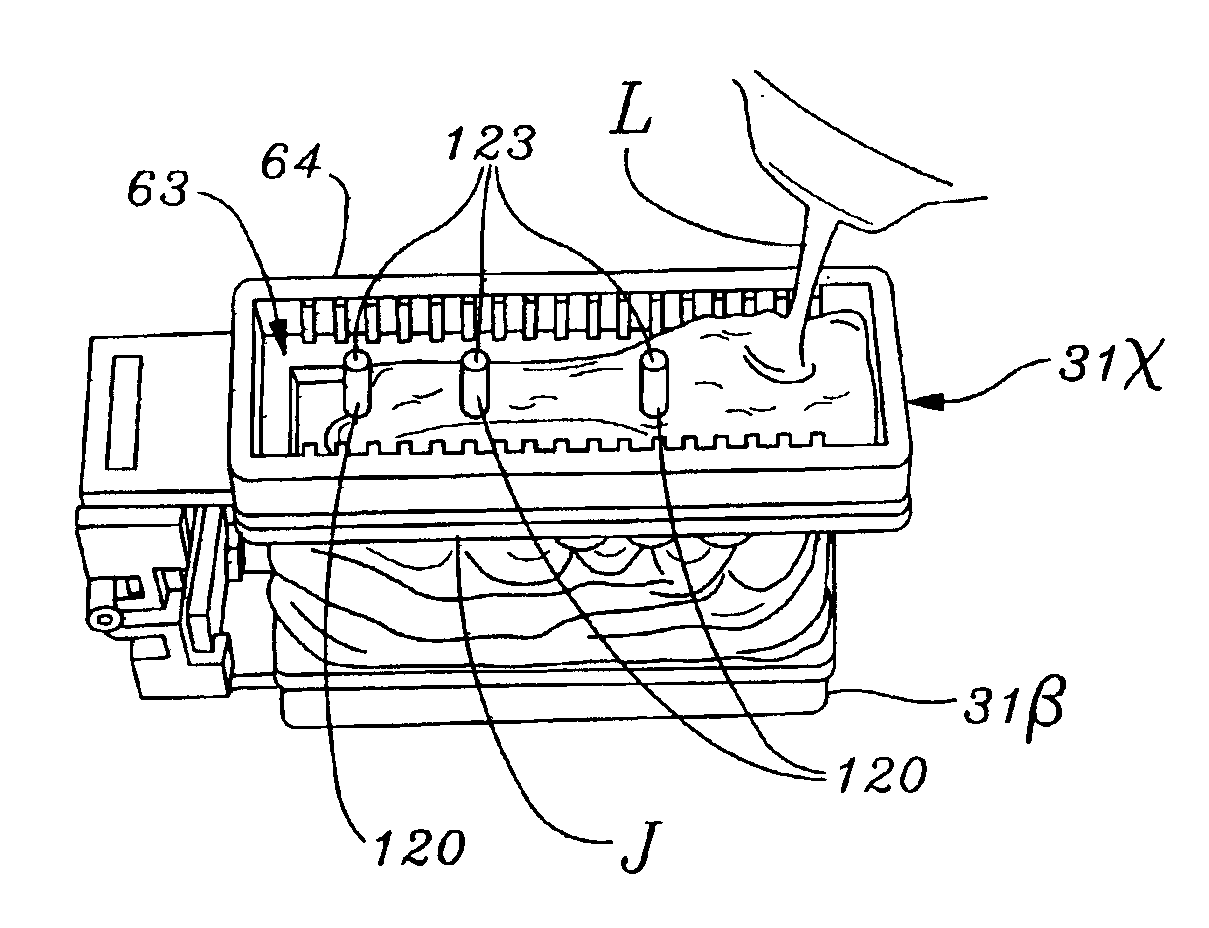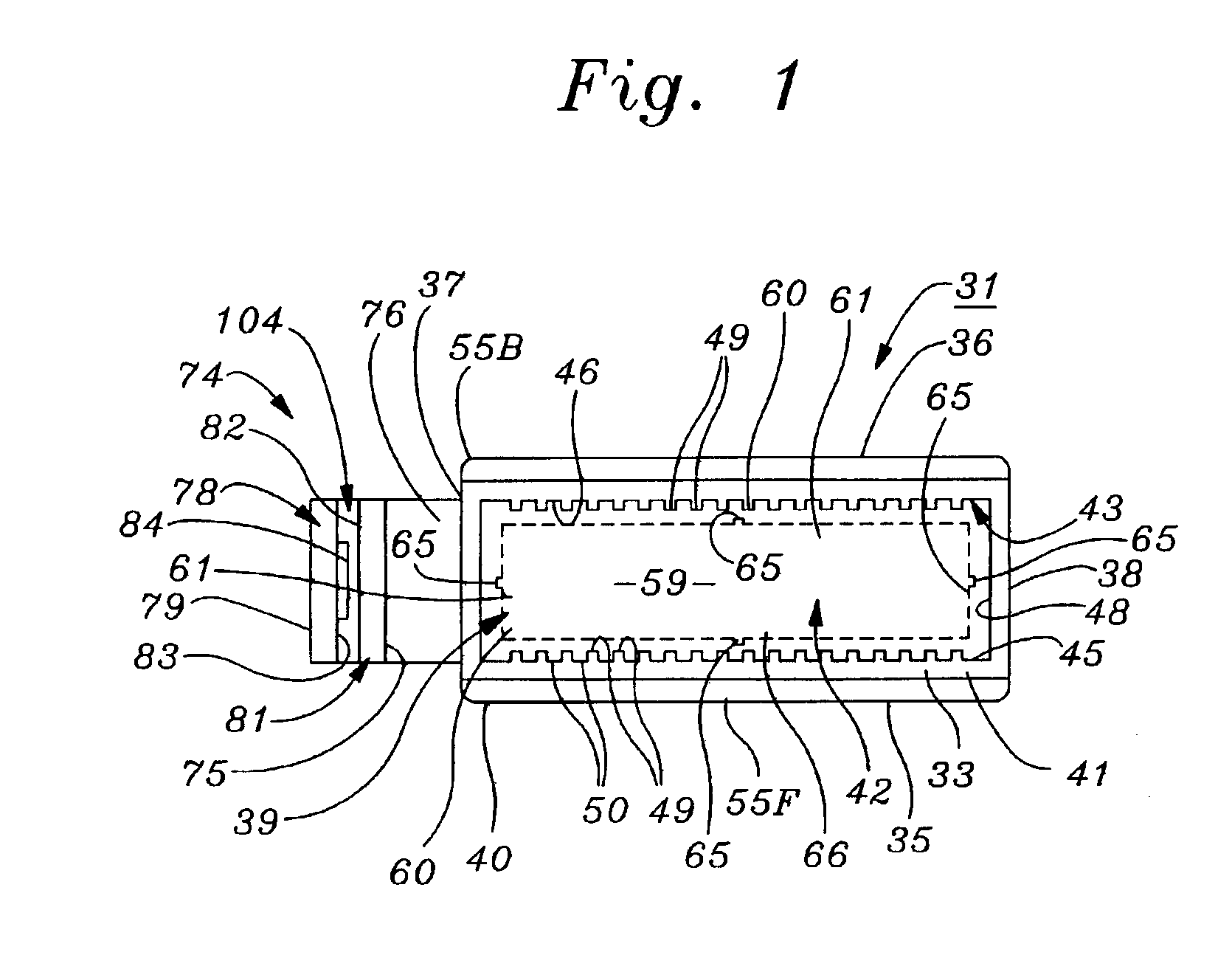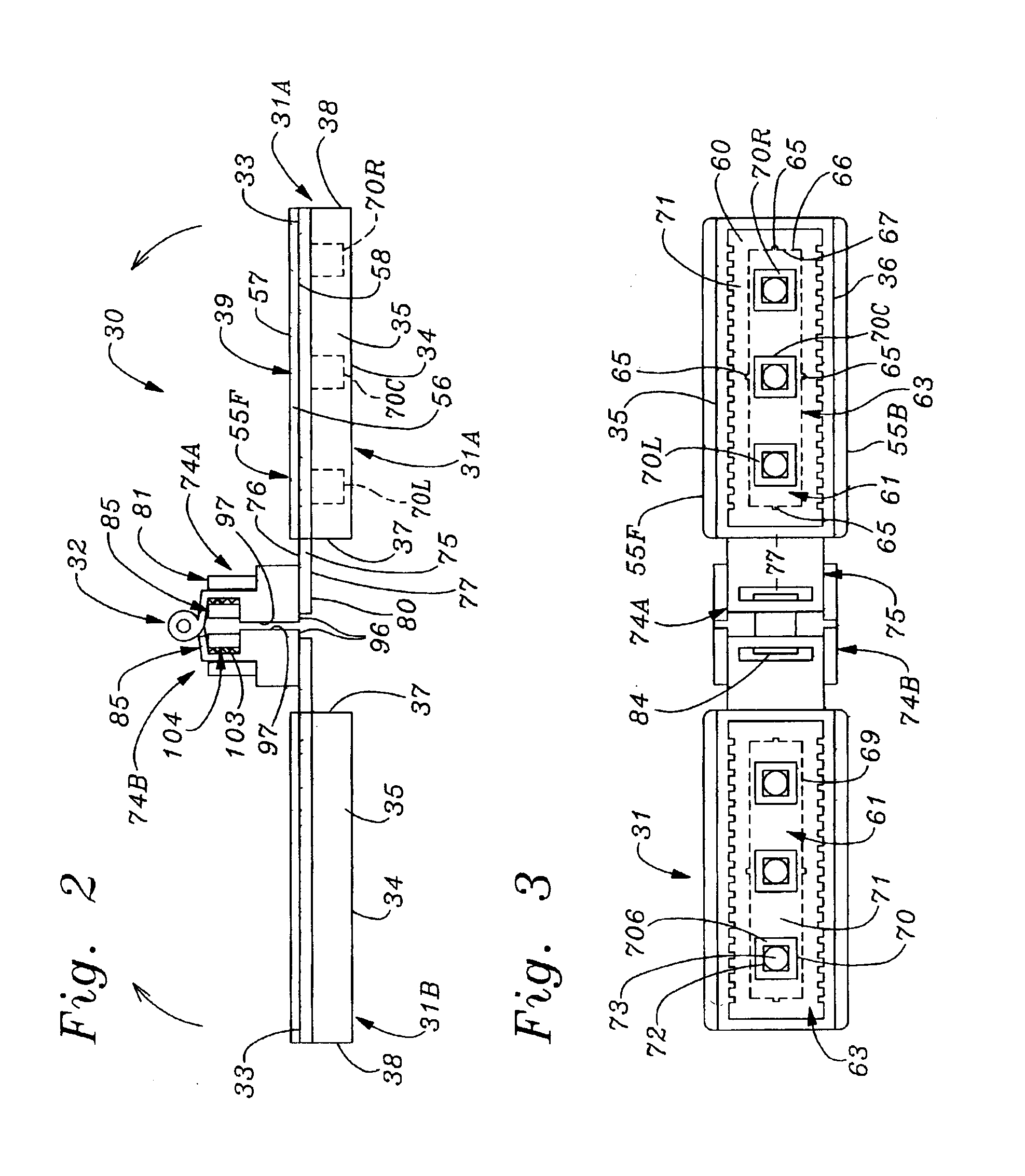Pin tray dental prostheses modeling system with re-usable tray
a technology of dental prostheses and trays, which is applied in the field of pin tray dental prostheses modeling systems with reusable trays, can solve the problems that the exterior surfaces of the prosthesis cannot simply replicate the surface of the die segment, and achieve the effects of facilitating the placement of the pinned die segment within the trays, minimizing the number of different type parts, and quick and easy removal
- Summary
- Abstract
- Description
- Claims
- Application Information
AI Technical Summary
Benefits of technology
Problems solved by technology
Method used
Image
Examples
Embodiment Construction
A. Drawing Description Summary
[0070]FIGS. 1-3 and 19-21 illustrate components of a basic embodiment of dental prostheses modeling system according to the present invention, while FIG. 22 illustrates a drilling alignment fixture for use in an alternate embodiment of the system.
[0071]FIGS. 4-8 illustrate steps in a method of making a dental model cast from a single quadrant impression for use in fabricating dental prostheses, according to a basic embodiment of the invention.
[0072]FIGS. 9-11 illustrate preliminary steps in making master and opposing dental model casts from master and opposing mold impressions made by teeth in upper and lower jaws of a patient, use a “double-bite” or “triple” impression tray.
[0073]FIGS. 12-15 illustrate further steps in the method of fabricating a dental prostheses model according to the present invention, from either a single-bite or double-bite impression.
[0074]FIGS. 16-18 illustrate a finished pair of dental prostheses model casts mounted in an artic...
PUM
 Login to View More
Login to View More Abstract
Description
Claims
Application Information
 Login to View More
Login to View More - R&D
- Intellectual Property
- Life Sciences
- Materials
- Tech Scout
- Unparalleled Data Quality
- Higher Quality Content
- 60% Fewer Hallucinations
Browse by: Latest US Patents, China's latest patents, Technical Efficacy Thesaurus, Application Domain, Technology Topic, Popular Technical Reports.
© 2025 PatSnap. All rights reserved.Legal|Privacy policy|Modern Slavery Act Transparency Statement|Sitemap|About US| Contact US: help@patsnap.com



